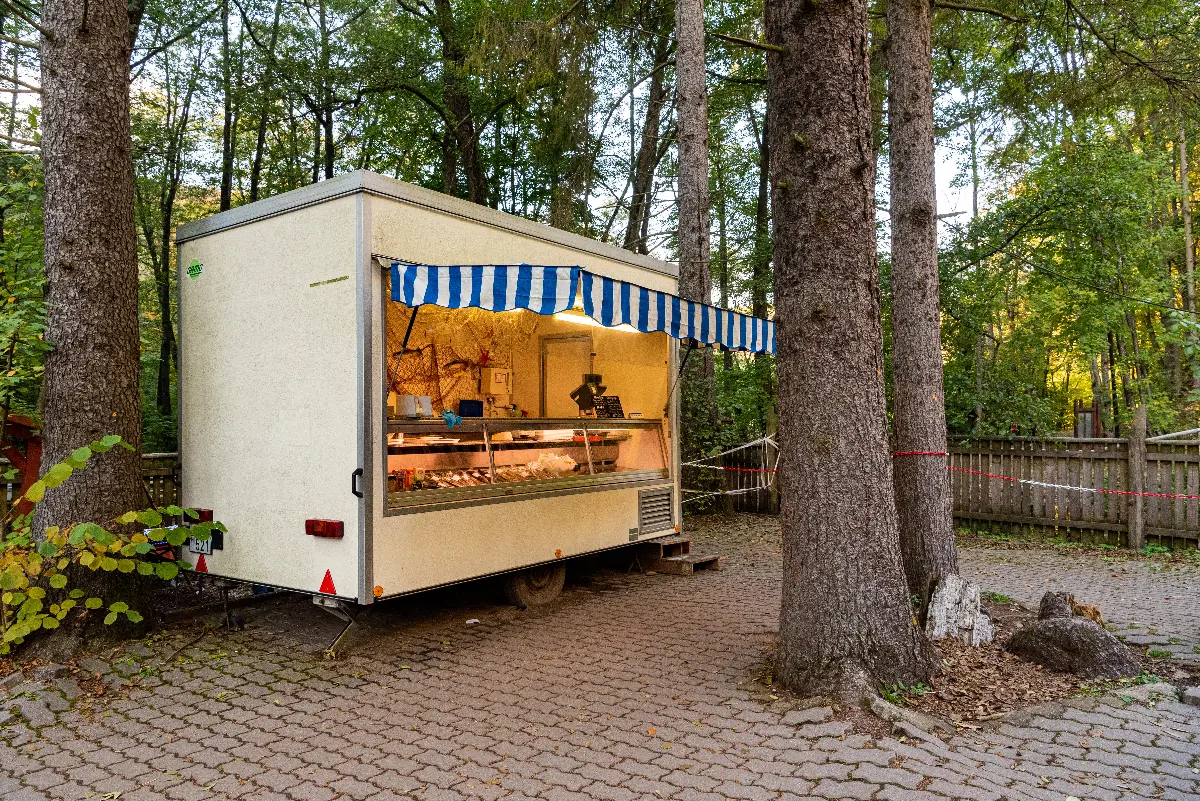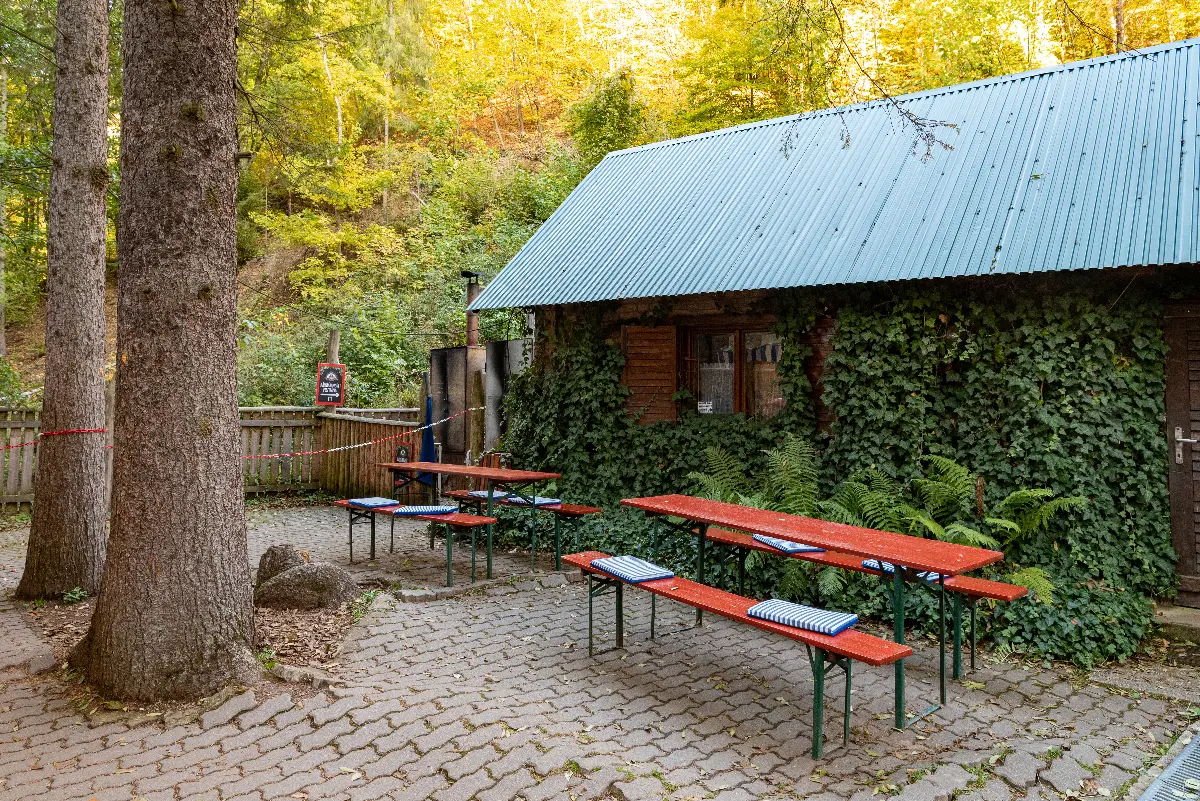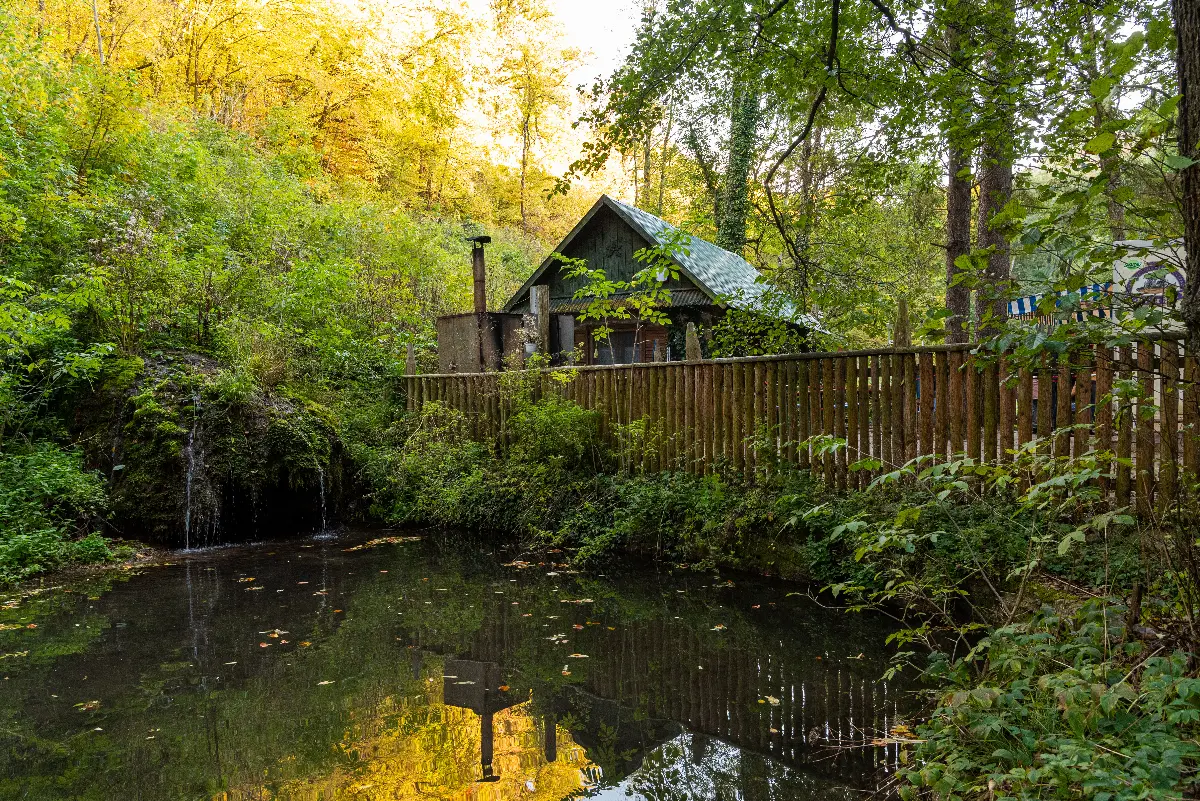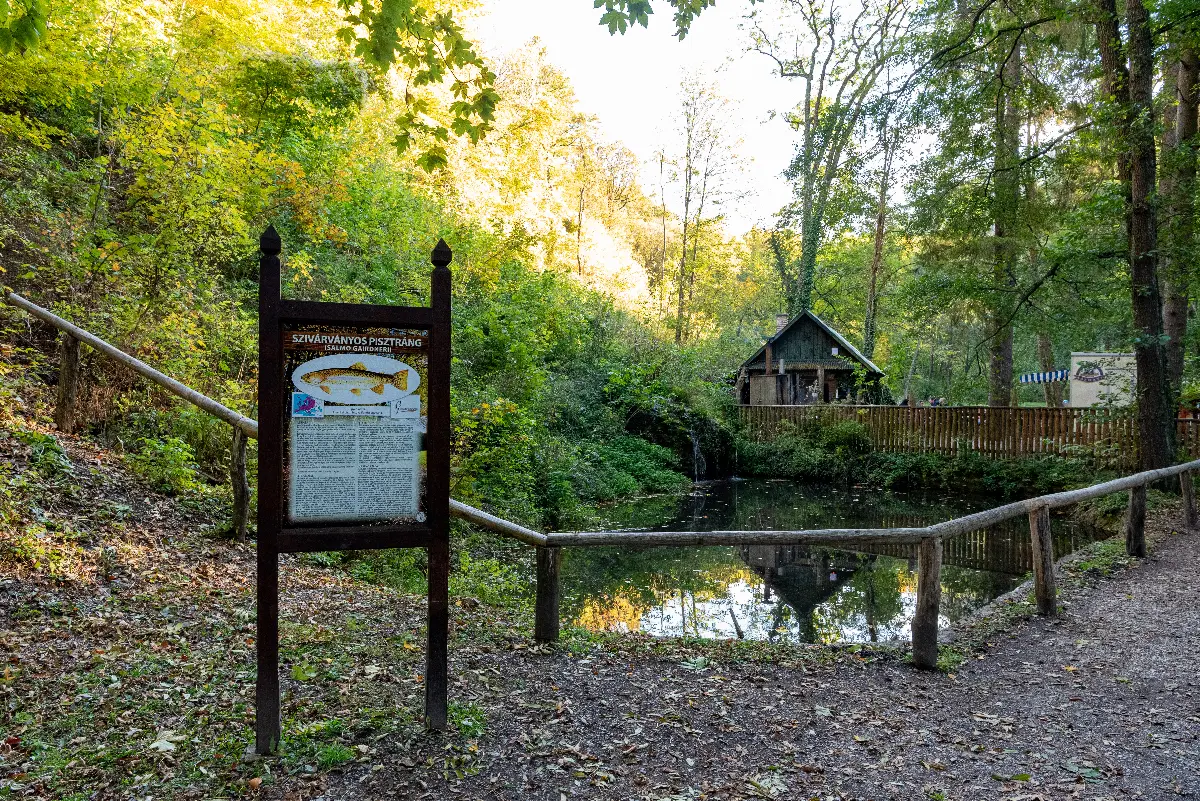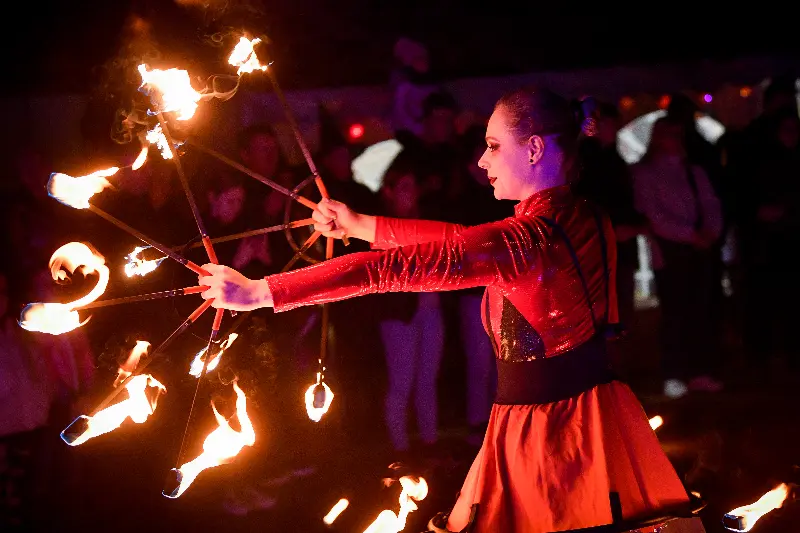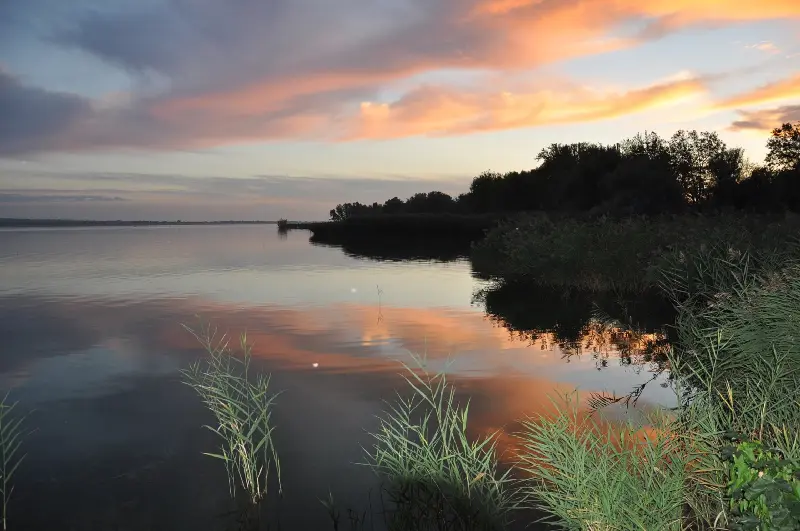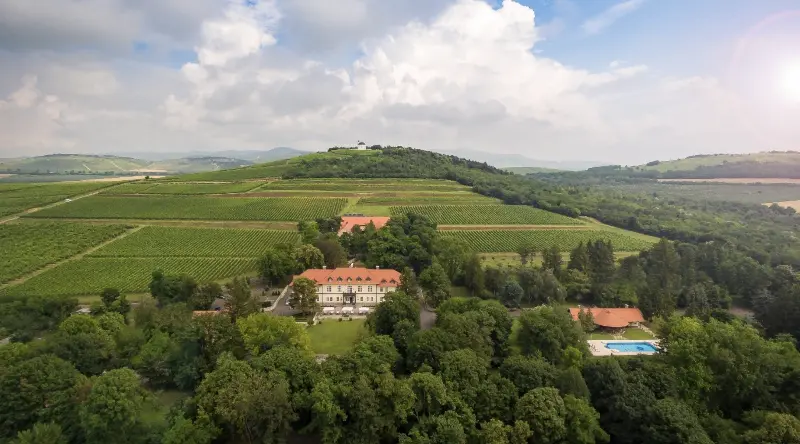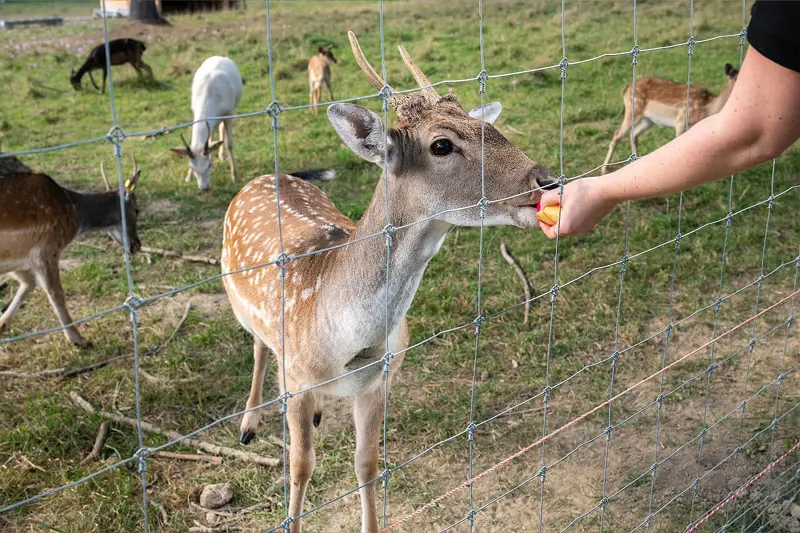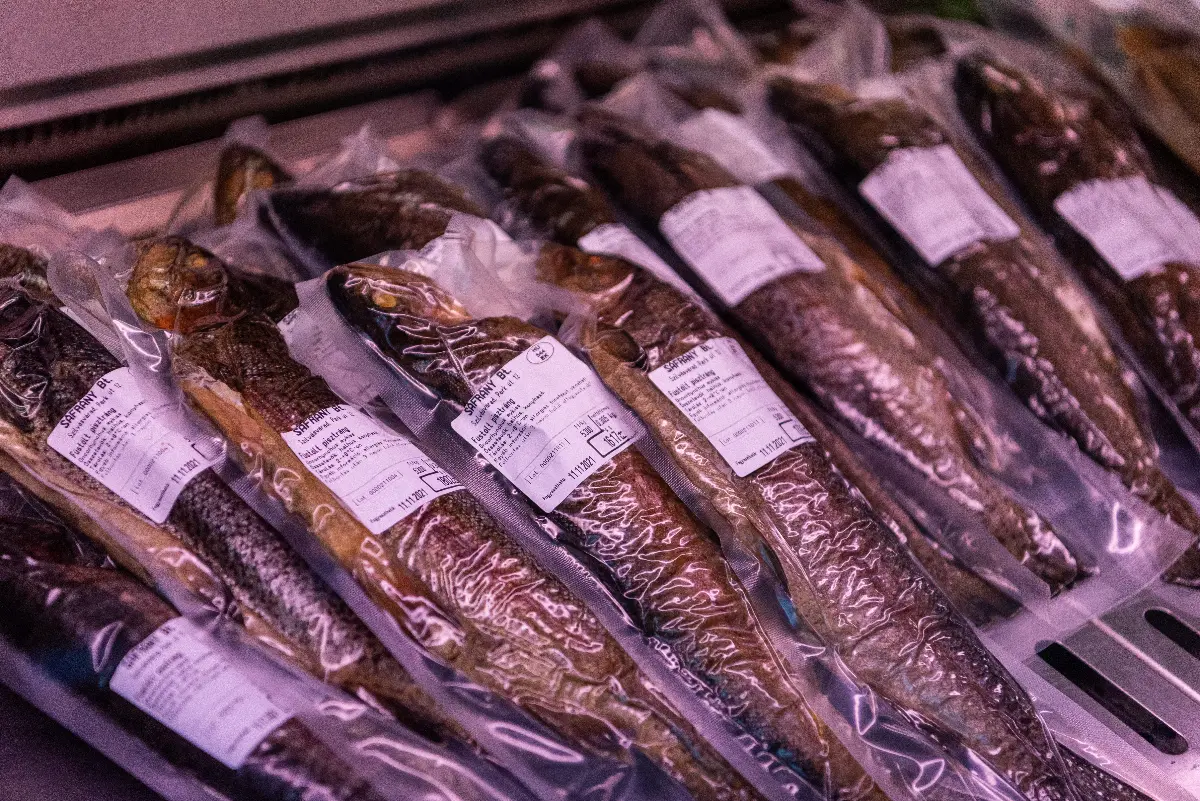
Helyszín címkék:
Trout partner dance
Jászberényi Attila
If you live a sporty life, eat sporty fish, if you don’t, you should – once claimed András Réz the film aesthete, a fan of trout. Its natural habitat, the cool, clean, fast-flowing mountain stream and the continuously active lifestyle may cause that this is our only fish about which the preparation methods in cookbooks do not describe how to avoid inland fish flavour (which is, apart from preconception, not bothering, on the contrary), so its tied, muscular, white flesh is preferred for itself. Otherwise we are dealing with a sympathetic, predator with hard life, it has not accidently been a cult fish at least since Shubert’s – created by poetic inspiration and the impact of some vintage wine from Szekszárd – Trout Quintet and the standard work of beat literature titled Trout Fishing in America by Richard Brautigan. The only fresh water fish species which is a compulsory item on the menu in the best European restaurants, it is also experiencing a renaissance in Hungary, trout nurseries spring up from the ground (rather from water), festivals in Tapolca are organised for it. We can hardly encounter with the aboriginal, native (brown) trout of Hungarian water on the shelves in stores, we mainly have to undertake a trip to Northern Hungary to meet, as compensation our target can be the two most popular tourist destinations in Bükk, Lillafüred and Szilvásvárad.
In Lillafüred the address is quite simple: Turn right at Hotel Palota toward Bánkút, after three kilometers it’s on the left when trout farms and a forest open air museum appear. The first house is a listed building, the former residence of the ecologist-polyhistor István Vásárhelyi, who was the manager from the opening in 1933 to 1968, could have entered for the title of the first Hungarian ethologist, a legend in trout world. After István Vásárhelyi’s death a decline started, the need for either the expertise or the planned economy of trouts terminated – at that time in five-year plans the only design specification was to supply comrades’ red checked tables in a representative way. Fish farming for consumption hardly exceeded one ton a year, it was heavily unprofitable as well – it was increased to almost one hundred tons by the Hoitsy-Rieger family in the largest trout settlement of Hungary after the political transformation. After some difficulties from this we get on the plate the fish which grows to the portion of 250-300g in 1-1,5 year.
For all of this a lot of cold, oxygenated water and a lack of biological rivals are needed, to specify the two most important features of successful trout framing The first is produced by water purification and recirculation in Lillafüred. Due to the final product which is almost as pure as drinking water almost only diurnal emission must be replaced by variable flow. The biological rival is a tougher nut, grey herons, kingfishers, otters are responsible for the decisive majority of the loss of outside stocks. In spite of the increasing number of the latter ones and the size of the damage done by them (quoting from Lutra by István Fekete) the otters got a wooden statue at the entrance of the restaurant as the symbol of humility before the ecosystem. But the result speaks for itself. The fried fish restaurant seating 120 persons is open from May to the end of September to give the opportunity for the honoured hikers to eat up to six hundred servings in garlic crust, grilled, in a pot or made on iron plate on a summer weekend in airy, babbling and signal-free outdoor conditions. They are closed on Mondays and Tuesdays, but on weekends, be prepared to involve some light queuing in your schedule with some trout viewing.
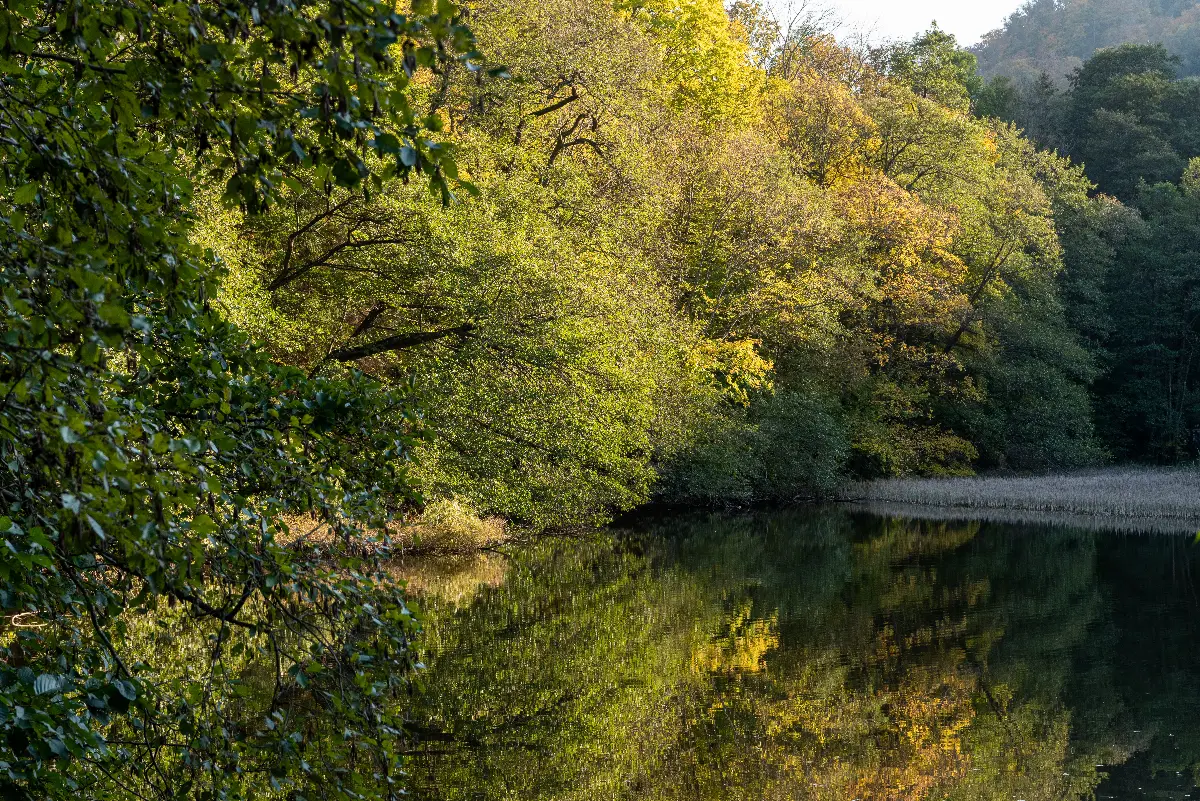
And three years ago, they opened their four-season restaurant, a very special place called Restaurant to Trout. Don't even try to drop in, there will definitely be no table, it is recommended to reserve (there is no signal strength here either, there are no phone zombies on the airy terrace, but you can call them by landline). If we even visit spontaneously, you could easily hit the waiting hour by observing the trout farm and the Fazola melting furnace. The cuisine is artful but not complicated, the main dishes can be counted on one hand and vary season by season. It is a potentiality that everything is grown locally, especially on a trout base, the wholesale truck does not come here, they make even the unmissable pickled mushrooms. There is no shortage of boldness either, the silky-filtered fish soup with matchstick noodles is made according to fundamentals from Baja, and red wine, Pinot Noir by Titi Gál, is boldly recommended for the trout with earthy sour mushroom sauce. If you want fish fried on skin, don’t miss the most spectacular, the truly golden golden trout (including the albino version of the rainbow version), and if you’re lucky, among daily offers you can even catch sturgeon – also bred locally – steak from Garadna. The brown trout, which is crossbred into aboriginal, has enough progeny to be colonized into national living water, to the delight of herons, otters and fly anglers.
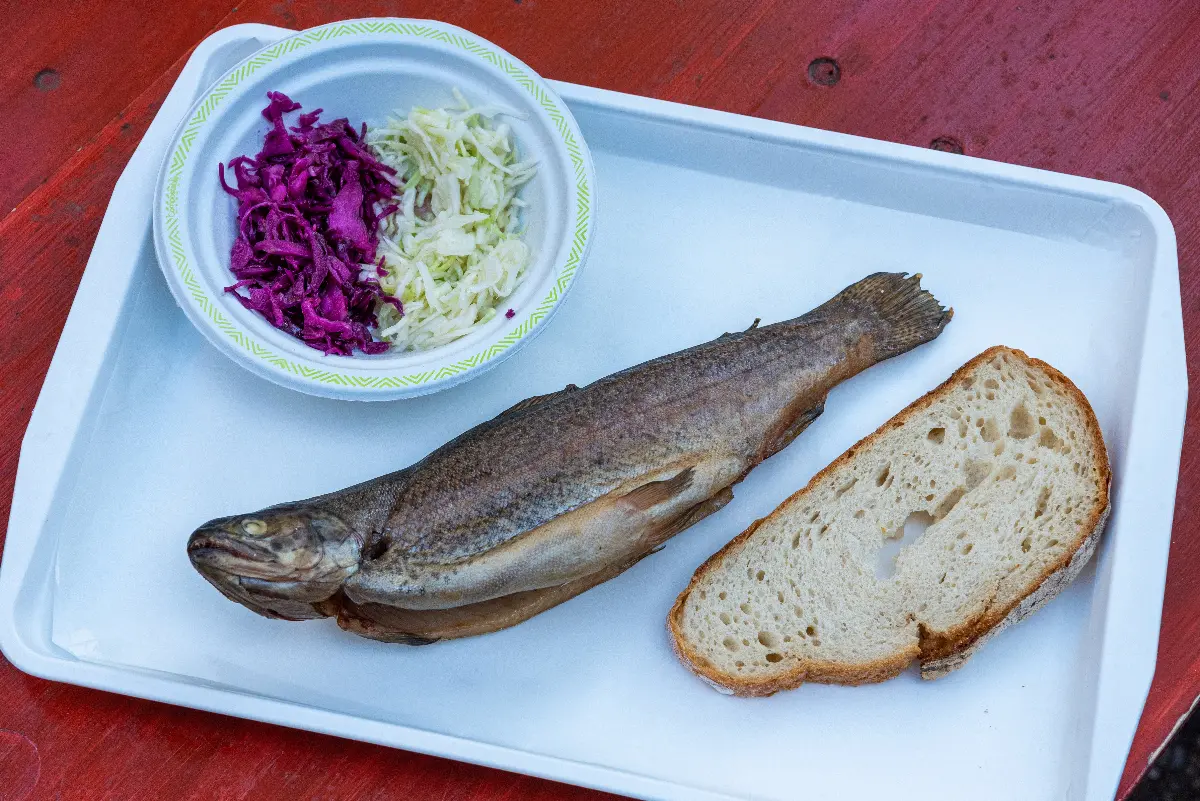
In Szilvásvárad we don’t have to search for the trout lakes long, they are located in large numbers on the main street of the tourist attraction Szalajka Valley, separated from the closer interest of the public by a symbolic wooden fence as in a zoo. What the hiker of great merit certainly doesn’t know is what the last, romantically mysterious ashlar building is beyond the line of buffet restaurants where even the least determined visitor, who becomes heavy due to the trout from Chile but considered local and draft beers, can get to without requiring a bottle of oxygen. This is the hatchery, symbolically at the beginning and the top of the breeding process. The cottage is not there by accident, i.e. on the former shore of the supposedly first Hungarian artificial trout lake. It happened that sometime in the middle of the past last century, the former owner, Count Keglevich, had an idea as the water of the stream was suitable for cooling foundries (thinking of the pond built for this purpose between the hatchery and the Rock Spring, which can be enthralled to this day), so by tapping it trout could be put in. There are altogether thirty-three of the pools, but today it is good to be able to use a quarter of them, with one-third acre of water surface. The ponds are just running pools using the water of the stream, with liquid content changing about five times a day, but the main problem is the adequate water flow, of which there is less and less, while the summers are getting warmer. "I have been here for thirty years and during that time the water has become at least thirty percent less," explains László Sáfrány, the owner of the settlement, about the extent of global warming. But if the water temperature doesn’t go to twenty degrees Celsius (they would perish in hours due to a lack of oxygen), they will inevitably shoot up to four hundred grams of commodity in quantities of ten tons a year.
The name-giver Sáfrány family has been a trademark of trout farming in Szilvásvárad for five decades. In 1990, literally doing their best, they launched their own enterprise. It was a pre-ordained idea that fish could be sold in processed form the most easily. Processing meant fish smoking, which was an absolute novelty in Hungary at that time, both technologically and gastronomically, first “people had to be explained what smoked fish was”. So then in 2011 a shady buffet restaurant called Trout Yard opened as well at the top of the tourist alley, with wooden benches, harmoniously, as an authentic forest street food plant. With two caravans not designed for moving out, but all the more cold (“If you need, I’ll warm it, but I always ask whether they usually wash their feet in socks”) with smoked trout, fish prepared in a hot-air stove, fish fillets fried in olive oil and slices of garlic (the trout can be ordered only roasted whole, no small portions). Don't expect alcoholic beverages, feel free to take them with you, because according to the police, "we don't want to appear so much in the catering line, it's enough if our fish is eaten". It is constantly open in summer, but can also be enjoyed at weekends out of season. And don't expect to eat local trout in other buffets and restaurants in Szilvásvárad, on the one hand it is hampered by capacity, and on the other hand by cheaper raw ingredients from mass-produced Turkish, Chilean, Spanish and Alpine farms with hundreds of tons of yields per year, where it can be extracted at half price due to the volume. "But we don't even transport it to anywhere else, who wants to eat our fish, they have to come here," László concludes.
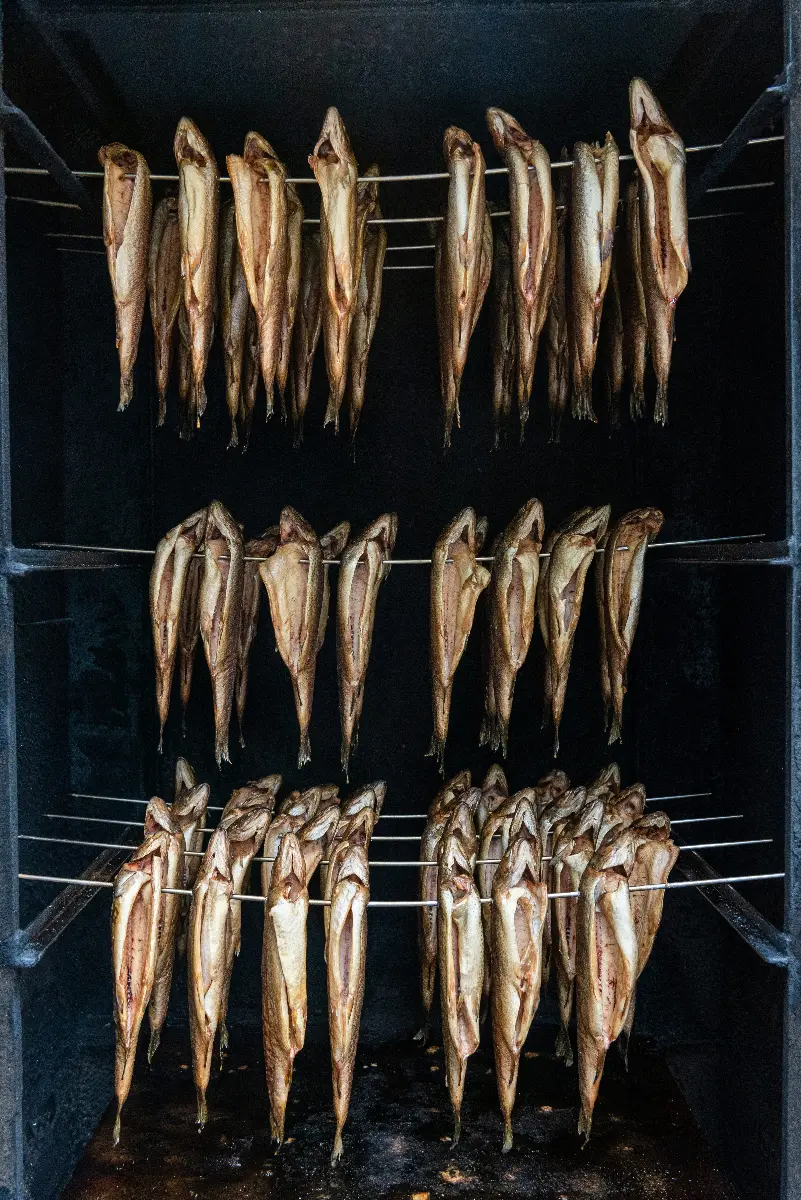
SMOKING
The most common way of consuming trout apart from bears is this ancient preservation process among homo sapiens. There are several methods, but we should believe in them only if it does not take place in an electric stove but regularly in hardwood smoke. In Szilvásvárad, it is traditionally done only by salt and beech wood embers at the "sufficient temperature", in 2.5-3 hours. All you can know is that it is about hot smoking, i.e. a temperature above 80 C, which results about sixty percent weight loss, but - after 3-4 days of rest - the shape of the fish, the texture and the natural taste remain perfect. In Lillafüred (as well as in the plant in Mályinka) the trout is smoked on beech wood chips, but after marinating in twelve spices, starting from cold smoke at 30-40 C to lukewarm, rising to 60-70 C, it becomes light and golden brown in a day. The trout of Szalajka Valley is served strictly cold, the trout from Garadna stream can also be prepared in the oven according to the description on the package.

